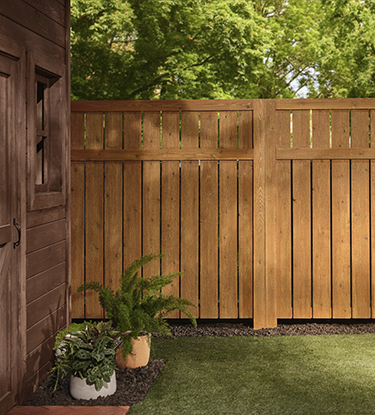Preserve Your Fence's Integrity with Specialist Fence Cleaning Near Me
Preserve Your Fence's Integrity with Specialist Fence Cleaning Near Me
Blog Article
Just How to Accomplish Professional Outcomes With Deck Staining
The procedure of changing an aging deck right into a rejuvenated outdoor area demands a lot more than simply a coat of stain; it demands a methodical approach and interest to information. From picking the proper discolor for your deck's timber type to understanding the application method, each step plays a vital function in the last end result.
Selecting the Right Discoloration
Picking the proper discolor for your deck is an important choice that substantially affects the general look and longevity of the surface. When selecting a tarnish for your deck, it is necessary to think about both the visual preferences and the practical aspects of the item. Solid color stains, on the various other hand, provide the a lot of UV protection and offer a large variety of color alternatives yet will totally conceal the timber grain.

In addition, think about the kind of timber your deck is made from, as different spots are created to work best with certain timber kinds. Comprehending the level of upkeep you want to devote to is additionally crucial, as some stains might require even more regular reapplication than others. By thoroughly considering these aspects, you can pick a stain that not just boosts the look of your deck but also safeguards it for years to find.
Preparing the Deck Surface Area
When considering deck staining, the first action towards attaining expert results includes extensively preparing the deck surface. Appropriately preparing the deck surface is important as it ensures that the stain sticks well and gives long-lasting defense to the wood.
Fining sand the deck surface is additionally vital to smooth out any rough areas and open up the wood pores for far better discolor penetration. Make use of a medium-grit sandpaper to sand the deck in the instructions of the wood grain.
Finally, protect any kind of neighboring plants, furnishings, or surface areas from possible damages by covering them with plastic sheeting or ground cloth. Making the effort to thoroughly prepare the deck surface sets the structure for a successful discoloration work and guarantees professional-looking outcomes.
Using the Stain
To attain an expert surface when staining a deck, thorough application Go Here of the discolor is necessary. Use the stain equally, complying with the timber's grain to improve the deck's all-natural appeal. By applying the stain thoroughly, you'll achieve a professional-looking surface that boosts both the appearance and longevity of your deck.
Making Certain Correct Drying Out Time
Making certain sufficient drying time post-staining is critical to the overall success of the deck task, as it enables the discolor to properly establish and bond with the timber surface. As a basic standard, most deck spots will need at the very least 24-48 hours to completely dry completely.
During this drying out period, it is essential to keep the deck surface area totally free from any kind of foot traffic, furnishings, or various other objects that may disrupt the finish. Taking the time to ensure thorough drying will certainly add dramatically to the longevity and look of your discolored deck.
Keeping Your Tainted Deck
Proper upkeep of a tarnished deck is necessary for maintaining the honesty and look of the surface achieved through thorough drying out. To keep your tarnished deck properly, normal cleansing is essential.

Conclusion
To conclude, attaining specialist outcomes read here with deck discoloration includes selecting the appropriate discolor, appropriately preparing the deck surface, applying the stain equally and continually, permitting for enough drying out time, and preserving the tarnished deck routinely. By adhering to these steps very carefully and attentively, you can ensure a wonderfully stained deck that boosts the appearance and longevity of your exterior area.

Proper maintenance of a stained deck is vital for protecting the stability and look of the surface achieved with detailed drying.
Report this page